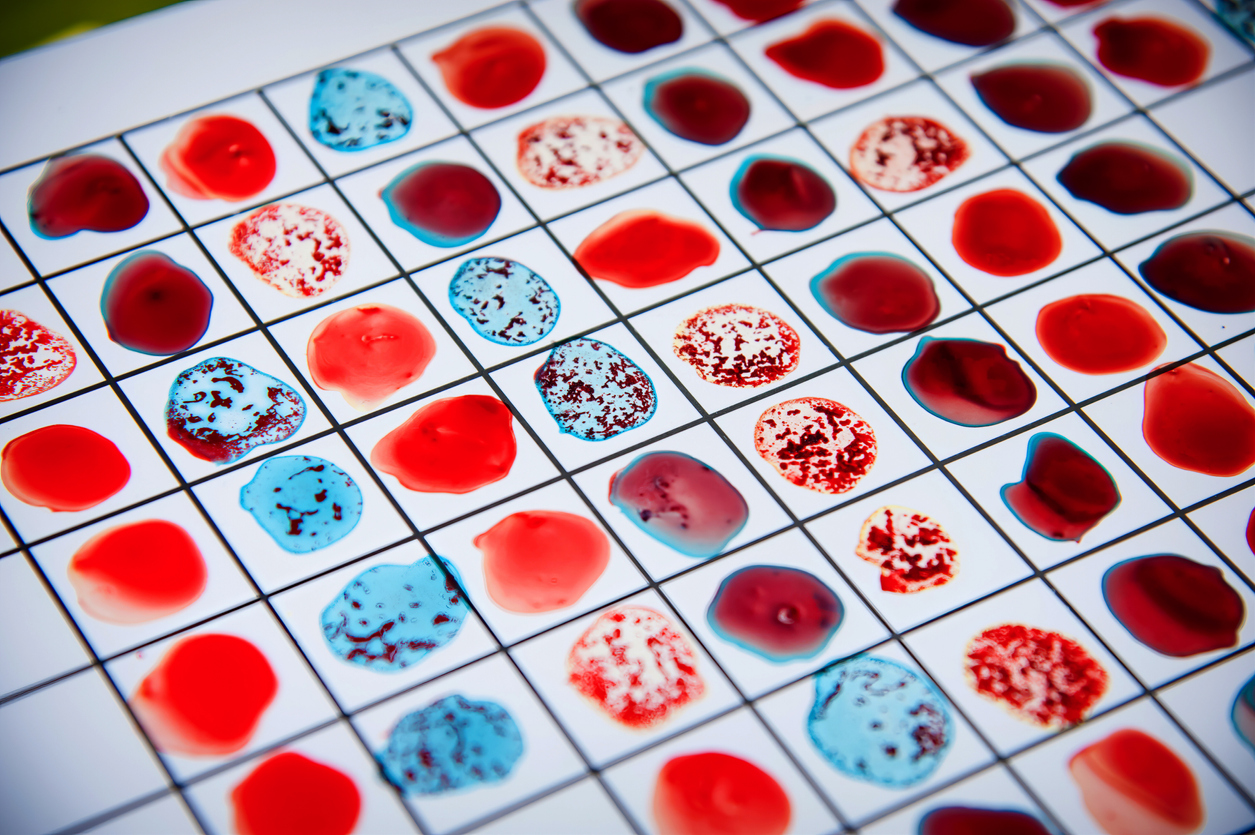
Why Do We Have Different Blood Types? A Look at Evolution and Inheritance
By Krista Thomas, Communications Strategist, with medical support and expertise from Dr. Tho Pham, Chief Medical Officer
While all blood donors are united by the same general donation experience and, typically, the same passion for supporting others in the community, we naturally tend to distinguish ourselves by our blood types. And doing so is only natural since your blood type is an important factor in dictating what blood product you’re best suited to donate — and, consequently, what type of patients you might be supporting.
For many years, however, this identification by blood type wasn’t possible. In fact, it wasn’t until 1900 that a young researcher in Vienna, Karl Landsteiner, proposed the possibility that some blood reacted poorly to others, not because one set (the recipient) was contaminated by bacteria or illness, but because there may be inherent differences in people’s blood makeup. After a series of tests — for which he later won the Nobel Prize — Landsteiner confirmed the existence of blood types A, B and O, with the discovery of type AB following a few years behind. As you can imagine, this discovery was revolutionary in that, before science on blood groups was integrated into patient care, “…many transfusions ended disastrously. With doctors knowing nothing about blood types…, their patients’ survival rested entirely on the odds of receiving compatible blood,” as blood from an unlike donor would often mean the patient’s body wouldn’t accept the donation.* While it took years before his discovery was widely known and influential in medical practice, it no doubt did and continues today to save lives.
So, we know when blood types were discovered, but, you may be wondering, where do our blood types actually come from, both on an evolutionary and an individual scale?
In terms of why humans have different blood types to begin with, a few hypotheses have been proposed, one of the most popular of which suggests that blood types evolved to allow greater immunity against early diseases. Some of the most convincing evidence we have on this topic lies in the study of malaria, particularly one of the most deadly versions, Plasmodium falciparum. Researchers have noted that type O seems to have evolved before humans migrated from Africa and is particularly prevalent in areas known as malaria endemic regions. What’s more, some modern studies seem to suggest that those with type O blood group may be less susceptible to severe disease with malaria. Knowing what we do about numerous other changes to red blood cells that evolved as a mean to avoid this deadly disease, scientists are considering the real possibility that malaria (and potentially other diseases) gave early humans’ blood groups the push they needed to evolve.**
Though the origin of humanity’s blood types remains (and likely will remain) a mystery, we do have a great sense of how individuals end up with their specific blood types. It didn’t take long after the discovery of blood types in 1900 to determine that they were hereditary; by the 1920s, heritability of blood types was already so commonly accepted, typing was being used in legal settings to determine paternity!*
While there are many blood groups that exist beyond A, B, O and AB in smaller numbers throughout the world, a child’s blood type can most often be predicted based on the following chart.

So, while your parents might not have been able to predict your blood type exactly, it’s interesting to think of all the blood types you might have been! Regardless of your blood type, there is a use and a need for your support to help patients. Based on how common your blood type is, or its various properties, you may be better suited to certain donation types, which we encourage you to learn more about here. As a bonus, you can check out what mythical “blood type animal” your blood corresponds to on our just-for-fun illustrated webpage here.
We hope this content was educational an interesting look at one of the fundamental aspects of your unique medical makeup. If you have additional questions or want to check the best donation type for you (assuming you’ve donated with us before), email us at givebloodSBC@stanford.edu.
Sources
* Blood: An Epic History of Medicine and Commerce by Douglas Starr
** “The ABO blood group system and Plasmodium falciparum malaria” by Christine M. Cserti and Walter H. Dzik
